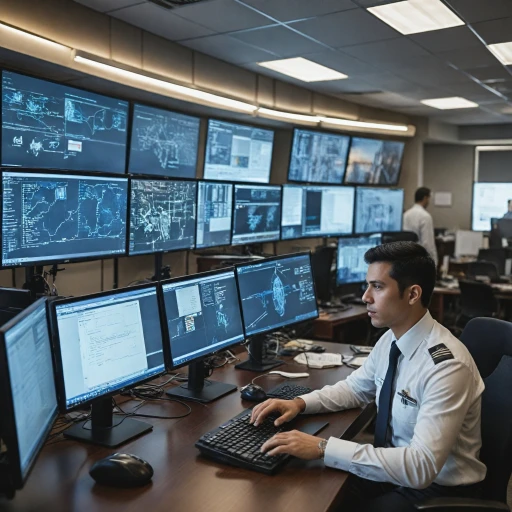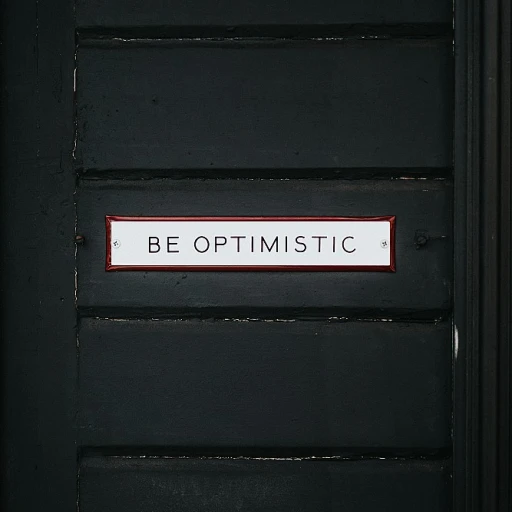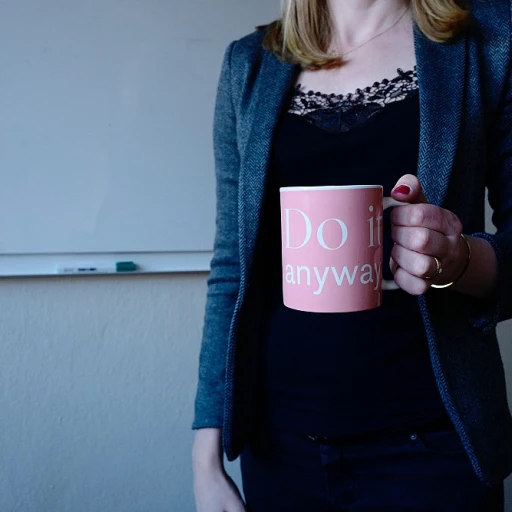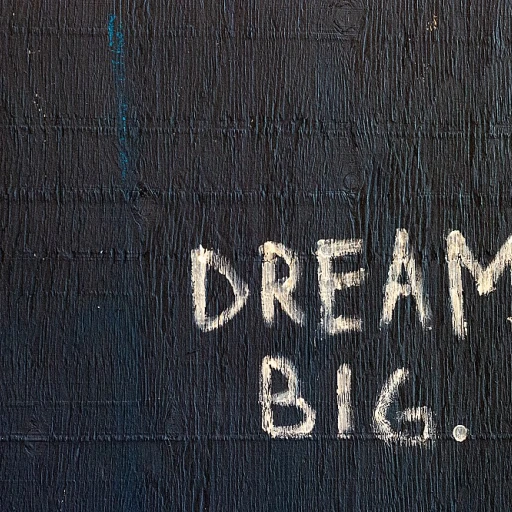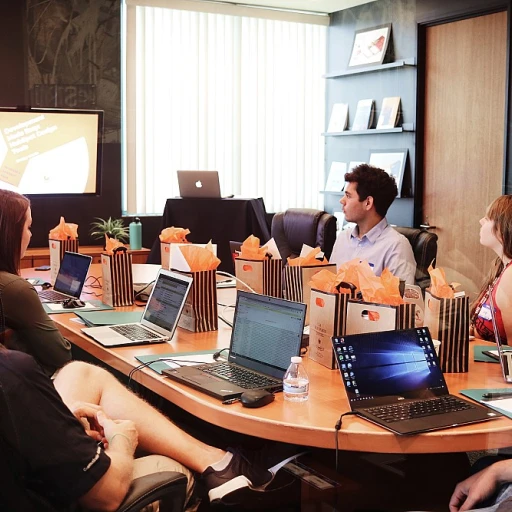
Understanding the 'catch ball' approach
Grasping the Concept of Strategic Catch Ball
In the high-stakes environment of the C-suite, strategic dialogue can often resemble a game of catch ball. Originating from a management technique in Japanese businesses, this method involves a back-and-forth exchange of ideas and information, akin to playing with a ball set or toss catch game, allowing for a dynamic flow of valuable insights.
Imagine a game of ball where both kids and adults participate in an experience that harnesses focus, teamwork, and hand-eye coordination. The C-suite, likewise, must treat strategy discussions as an engaging game that is not only fun but also crucial for business growth. This approach creates an atmosphere where every team member—from CEO to product managers—feels like a part of a cohesive unit. Much like a set outdoor ball game played by boys and girls, the catch ball method ensures every play or idea is fielded, discussed, and weighed for its strategic merit.
Adopting a catch ball mentality can have competitive benefits in today’s business landscape, just as beach toys do in a dynamic play yard. This interactive approach sets the stage for deeper engagement, allowing executives to collect and synthesize feedback from various stakeholders effectively. And much like a ball toys set tailored to appeal to every demographic, a strategic discussion rounds out potential blind spots and uncertainties in company strategy.
Yet, implementing this technique is not without challenges, such as establishing a culture that supports open and ongoing dialogue, or balancing cost efficiency when integrating it into existing processes. But, when done right, the method can lead to powerful outcomes, including driving innovation and fostering a collaborative culture, which are covered further in the following sections. In essence, by playing this strategic ball game, the C-suite can achieve a unique alignment, much like kids engaged in an outdoor play, that drives business success to new heights.
Enhancing strategic dialogue
Effective Communication Techniques within the C-Suite
Engaging in strategic dialogue within the C-Suite can often feel akin to a well-orchestrated game. Much like playing catchball, it's about the fluid toss and catch of ideas, ensuring that everyone’s contributions are acknowledged and valued. From executive meetings to team brainstorming sessions, enhancing strategic dialogue requires a mix of clarity, precision, and mutual respect.
Picture a game of catch you might play at the beach with kids, where the goal is not just to throw the ball but to make sure your partners are ready to catch it. Communication within the C-Suite mirrors this dynamic play. Executives must fine-tune their skills in active listening and provide feedback that guides rather than dictates. This exchange of ideas fosters a collaborative atmosphere where every voice matters, much like each player in a game is crucial for its success.
Leveraging tools like visual aids, or even structured frameworks, can be beneficial here. Imagine each strategy session as a product set, with specific components contributing to the overall success of the company’s vision. By setting clear objectives for each meeting, you create a structured environment that encourages constructive dialogue.
To truly enhance these strategic conversations, applying principles from renowned leadership programs, such as the Wharton's Executive MBA, can elevate executive acumen. Such initiatives provide C-suite leaders with advanced skills in decision-making and strategic thinking, akin to expertly playing a ball game where each move is calculated for maximum benefit.
Through this lens, fostering an environment where strategic dialogue can thrive is as essential as the games kids play—they inspire creativity, hone skills, and mold leaders who can adeptly navigate the complexities of executive roles, making the power of engaging dialogue a competitive advantage.
Fostering a culture of collaboration
Creating a Collaborative Environment in the C-Suite
In the pursuit of optimizing strategic dialogue at the highest levels of a company, fostering a culture of collaboration in the C-suite becomes essential. Understanding that collaboration isn't just about teamwork but about crafting the right environment can propel organizations towards sustained success. When leaders engage in a strategic 'game of catch', akin to children playing with toys like the toss catch set, they exercise flexibility and adaptability—key skills that drive innovation and growth. To cultivate this culture, it's crucial to emulate the dynamics of a well-played ball game.- Encouraging Open Exchange: Much like a throw ball game, where balls are thrown and caught in rapid succession, dialogue should flow continuously among team members. Executives must encourage an atmosphere where ideas are freely exchanged, without fear of judgment.
- Facilitating Eye Coordination: Just as kids enhance their hand-eye coordination through ball games, leaders must align their strategies and goals. Synchronizing efforts ensures that strategic objectives are not only understood but shared across the executive team.
- Empowering Through Feedback: The iterative nature of a catchball approach allows for constructive feedback. An environment where feedback is seen as helpful and not punitive fosters learning and innovation. Teams should view feedback as a growth tool, similar to children fine-tuning their skills with their favorite beach toys.
- Balancing Collective Vision and Personal Accountability: As with kids ages mastering a new toy set, leaders must balance the collective vision of the company with individual accountability. This balance is crucial in guiding teams to achieve set goals without compromising personal initiative and creativity.
Driving innovation through iterative feedback
Infusing Creativity and Novelty into Strategic Dialogue
Strategic dialogue in the C-Suite benefits immensely from a culture that emphasizes iterative feedback, a concept akin to the enjoyable and dynamic nature of a game of catch. Whether in a corporate boardroom or children playing with toys, the essence of a catch ball game is the continuous exchange that fuels improvement and innovation. Integrating this idea of back-and-forth, much like kids tossing a ball in games that enhance hand-eye coordination, promotes a vibrant atmosphere of creativity and problem-solving within leadership teams. Leaders must embrace the 'catch', or feedback, from all directions—think of it as a white ball tossed back and forth among a team aiming for the stars in their strategic objectives.- Break Traditional Hierarchies: Just as in kids' games where every participant gets to throw and catch, feedback should be welcomed across all levels. This ensures diverse perspectives contribute to refining strategic plans, akin to a set of interactive toys in play that engage everyone's creativity.
- Encourage Open Communication: Establish channels where throwing ideas, much like balls in outdoor play, is easy and encouraged. This lays the groundwork for a continuous improvement culture, similar to the iterative nature of a set game in which each toss brings a new strategic insight.
- Leverage Iterative Feedback Loops: As in games kids love, where progression is measured by how well the ball is caught, consistently revisiting and revising strategies according to feedback ensures adaptability and growth. This iterative cycle elevates strategic outcomes, analogous to raising the skill level in a toss catch game.
Overcoming challenges in implementation
Strategizing Through Strategic Setbacks
Navigating the ever-evolving seas of the C-suite often means facing challenges when implementing new strategies. These hurdles may feel like a ball thrown too fast in a catch game, but just as in any toss catch scenario, how you respond is what ultimately counts. Implementing a 'catch ball' strategy hinges on the ability to toss strategy ideas back and forth across the leadership team. While this dynamic exchange can ignite passion and innovation, expect to face roadblocks where strategic balls may fall short or miss their intended targets. Here are some insights into effectively overcoming these challenges:- Transparent Communication: Open and honest dialogue is crucial, just as consistent communication is vital in a hand-eye coordinated game set. Regular updates and feedback loops act as a net, catching inconsistencies and guiding realignment.
- Celebrate Small Wins: Just as beach toys don't yield immediate results, strategic initiatives need time to mature. Acknowledging incremental successes can help maintain momentum and morale, forming a constellation of small wins, just like a set outdoor game of stars in the night sky.
- Role Clarity: Clarify roles and responsibilities within the team to ensure everyone is aware of their position in the ball game. Define who throws the ball, who catches, and who provides actionable feedback to improve iterations.
- Iterative Feedback Process: Drawing parallels to a kids’ game set, where players learn and adapt through trial and error, constructive feedback loops can enhance strategy implementation. Encouraging toy-like creativity in feedback sessions helps foster a supportive and innovative environment akin to toys kids delight in.
Measuring the impact on company strategy
Evaluating the Results of Strategic Shifts
When it comes to measuring the impact of strategic initiatives on company performance, it's akin to evaluating the success of a thrilling ball game. Just as players need to assess their hand-eye coordination and teamwork in a throw ball session, the C-suite must evaluate the combined results of their strategic dialogue efforts.
Understanding the impact requires considering several angles:
- Quantitative Measures: Financial metrics remain key indicators. Analyze changes in revenue and profitability, examining whether the strategic changes mirror the company’s financial goals. Assessing these metrics is like checking the price and value of a successful ball set.
- Qualitative Feedback: Much like how kids provide feedback on their favorite toys, gather insights through interviews and employee surveys. Valuable feedback can be immensely helpful in understanding the cultural impact of collaboration and innovation as discussed previously.
- Adaptability and Innovation: Evaluate how the feedback loop has driven innovation. Consider the company’s adaptability to change, akin to a well-coordinated toss catch dynamic where every move is crucial.
It's crucial not just to gather data but to interpret it as effectively as a well-played ball catch. Identify patterns and celebrate achievements, much like how kids triumphantly toss and catch during outdoor play, whether with beach toys or in yard games.
In conclusion, measuring strategic impact is not a one-time activity but an ongoing process, much like a continuous game set. Team leaders should feel like skilled players, constantly adapting and perfecting their strategies for ever-improving outcomes.




